

Madison Park Times
Wildfire risks could put King County’s disaster budget up in smoke
Wildfire threats in western Washington are expected to rise in late summer even as King County prepares for the possible loss of federal funding for its emergency management department.
In late May, King County Office of Emergency Management Director Brendan McCluskey told Transportation, Economy, and Environment Committee members that his office is anticipating cuts in federal funding that directly affect wildfire services for the region.
According to McCluskey, wildfire risks in the western portion of the state are currently at normal levels through June, but are expected to elevate in July and August as the area becomes drier. In the case of King County, the wildfire risks are usually highest between August and October.
President Donald Trump and U.S Homeland Security Secretary Kristi Noem have expressed interest in significantly altering or eliminating the Federal

Farmer’s market coming to Madison Park
supplementing your market day outing with neighborhood food and products.
After almost a year of surveying the community, meeting with the businesses, working with the Seattle Farmer’s Market Association (which runs, the Ballard, Madrona and Wallingford Farmer’s Markets), the city has approved a Farmer’s Market for Madison Park. Here are a few things you should know:
■ The first day of the Market will be Saturday, June 14 from 10 a.m. to 2 p.m. on 42nd Ave E between E Blaine and E Madison, just west of the tennis courts.
■ The market will run every Saturday morning from 10-2 p.m. through Sept. 27.
■ 20-25 vendors/local farmers will be selling seasonal produce and berries, fresh eggs, honey, pork, fish and beef, specialty salads and salmon sandwiches, popsicles and more!
■ Please walk, bike to the market if possible. Support our local businesses by
GARDEN TOUR JUNE 7, FROM 10 A.M. TO 3 P.M.
Friends of Madison Park’s second annual Garden Tour is right around the corner.
From a Stunning Waterfront Jewel of art, water features, and an orchid house, to a Meditative Retreat tucked within the color and textures of a hidden backyard, to the Contemporary Elegance of stone and powder-coated steel, to the Comfort and Celebration of perennials and veggies, The Madison Park Garden Tour has these gardens and more.
$20/ticket provides you with a map and wristband to view all the gardens at your leisure on Saturday, June 7 from 10 a.m.
MARKET, 7





By Spencer Pauley The Center Square
By Friends of Madison Park
ADOBE STOCK
WILDFIRE, 7

Level up your prep: Go the extra mile
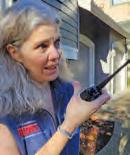
Although you should probably do something to prepare for The Big One when you live in Seattle, sometimes it’s hard to know where to start. Maybe you haven’t done anything at all, or you have a few flashlights and extra batteries around the house, but have been thinking about doing more, or you already have a stocked pantry and “go bag” and are feeling ready for action.
Wherever you are in your prep journey, you can do more. In this month’s column, I’m including some of my favorite tips to inspire you to up your preparation game. (In typically American fashion, I’m using sports metaphors.) Some suggestions are on the easy side, so I’ve included some advanced tips (labeled LEVEL IT UP).
ROOKIE MOVES
These are two simpler things you can do to prepare for an earthquake.
KEEP SHOES UNDER YOUR BED: This “if you do only one thing” tip is a favorite of our Hub volunteers. Strong earthquakes can lead to dangerous debris on the ground, including rubble and glass. If you are sleeping when The Big One hits (we sleep about one-third of our day, if we’re lucky), you’ll be barefoot and your shoes may be nowhere near. Put some shoes under your bed – ideally, a pair of old sneakers or boots – and put a warm sock inside each one (since you won’t find socks easily in an emergency). LEVEL IT UP: Create a full “get up and

go” set! Put the sock-stuffed shoes along with a sweatshirt or warm shirt, shorts/ pants, ball cap or other head protection, and a headlamp in a reusable grocery bag, and tie the bag’s handles loosely around your bedpost—things can get shaken up in an earthquake and be hard to find.
STOCK UP ON WATER: Per the prepper’s Rule of Threes, in a survival situation, you can go 3 hours without shelter, 3 days without water, and 3 weeks without food. If you’re lucky enough to shelter in place, clean water will be your priority. Easy guidance to remember is one gallon of water per person per day. The simplest way to stock up is to buy an extra case or two of water at the store and keep it somewhere you think you’ll be able to access (like the garage or covered backyard area). LEVEL IT UP: Plastic
degrades over time. Find hardy, refillable plastic containers, or light aluminum water bottles like the ones from Open Water. I don’t recommend emergency water pouches, since they’re not refillable, but canned water, on the other hand, is reportedly good for 100 years, so worth considering.
THE JV SQUAD
More advanced tips – if you’ve already done some of these, you might already be a prepper!
MAKE A GO BAG: If your house becomes unsafe, you might need to head to a shelter. Consider creating a Go Bag that has minimal essentials: some water, granola bars, a small first aid kit, a jacket or sweatshirt, warm socks and a pair of underwear, and a pair of sturdy gloves. LEVEL IT UP: Add a USB power bank
(ideally charged up each month), a small radio, a local map, a printout of your ID/passport, some small bills (you never know), and your out-of-area contact and other vital info (see below).
SET UP AN OAC: In a serious emergency, phone circuits will be overloaded and cell phone towers might be damaged. Ask a trusted person living east of Spokane to be your out-of-area contact (OAC). It’s sometimes easier to get a text out of the city than across the city. Write your OAC’s phone number down on paper (since your phone might run out of power) and keep it somewhere close, like your wallet. Then, tell friends and family to contact the OAC (instead of trying to call you) if you are in an emergency. LEVEL IT UP: Collect ALL your essential information, including insurance information, prescription names,
important contact names/ addresses, and more. (Go to bit.ly/Sea-BePrepared for a fillable worksheet.) Print it out for your Go Bag, and also email it to your OAC so they have it if needed.
KNOW WHERE TO MEET UP: Have a plan for where your family will meet up during a disaster, especially if any of you work away from your home or if you have children in school (if you have little ones, find out what the school’s reunification plan is).
LEVEL IT UP: Regular column readers are likely aware that Madison Park has an Emergency “Hub” near the playground’s tennis courts: a designated volunteer-run meeting place for neighbors to meet after an earthquake (or other disaster) to share resources and skills.
GOING PRO
This column isn’t long enough to describe how to stock up on food or get radio-ready, but
GET A GENERATOR: Generators will help you in an emergency and let you help others (at a minimum, they’ll let you power up cell phones to help you get information). See my April column (search “generator” at MadisonParkTimes.com) for some generator basics.
LEARN FIRST AID: First responders will likely be held up or unable to reach us in an emergency. Learn some first aid basics to help yourself, your family, and your community. This year, I took classes in both Stop the Bleed and CPR. I learned that someone can bleed to death in just five minutes, and a professional tourniquet is a must – and I also now know how to help a choking baby. While I recommend learning
CPR in person (so you can learn how much pressure to apply), Stop the Bleed can also be done online (stopthebleed.org/training/ online-course/).
CHECK YOUR HOME’S SAFETY: Learn how to secure your house using the city’s Earthquake Home Safety Guide (go to bit.ly/ Sea-ESG). It’s a short fourpage guide that discusses items like cabinet safety and securing your water heater and wall hangings.
LEVEL IT UP: Contact your current home insurer and see if you can get a free estimate for earthquake insurance for your home (even renters can get it!). Even if you decide not to get insurance, you could find out what is needed to make your home earthquake-safe; per the WA Insurance Commission, some insurers will require some baseline improvements, such as “bolting your home to its foundation, bracing your home’s interior walls, or using strapping guards to hold down fixtures, such as hot water heaters.”
I hope this list has made you think about how you could be more prepared for an earthquake or other serious disaster. It’s just scratching the surface, but it’s a start!
As always, this column is part of Madison Park Emergency Hub’s outreach effort. We’re an all-volunteer organization focused on neighbors helping each other after a disaster. To get on our mailing list, contact us at madparkhub@gmail. com.
Save the Date for practice drills at the Madison Park Hub on Saturday, Aug. 16 or at Madison Valley’s Hub (in the MLK FAME parking lot) on Saturday, Sept. 20. See what we do and how you can help and get help in a serious emergency.
Seattle Emergency Communication Hubs plan emergency exercises
Imagine a massive powergrid failure leaving the entire Pacific Northwest without electricity. Now imagine this happening while Seattle hosts the World Cup Games!
Volunteer workers of the Seattle Emergency Communication Hubs will test their crisis-response skills under a simulation of those conditions in activation drills scheduled for June:
■ Saturday, June 7, Noon to 4 PM El Centro de la Raza
2524 16th Ave. S., Seattle, WA 98144

■ Sunday, June 22, 2025, Noon to 4 PM Maple Leaf Reservoir Park (Southwest Corner) 8204 Roosevelt Way NE,
Seattle, WA 98115
The public is invited to these events – to learn about
the Hubs, to think about their personal preparations for a disaster, and to assist Hubs volunteers in putting their skills, resources, and procedures to work. “We especially need people who can read a short script and present the Hub a problem to solve,” said Ann Forest, exercise coordinator.
The drill includes orchestrating a shift change, and a steady stream of “actors” will ensure that the Hubs volunteers can test their procedures, resources, and skills under conditions resembling a real-life emergency.
Hub volunteers have
received training in Psychological First Aid.
“We want to practice using the skills we have learned in a high-stress situation,” Forrest said.
“We will need actors who can help create a sense of the stress of the situation without going overboard.”
New this year is a medical component. Doctors, nurses, EMT’s, and people with similar skills are encouraged to show up and learn how they can help.
The Seattle Emergency Communication Hubs is a grassroots organization dating back to 2008; its purpose is to gather and
share information and to match needs and resources in the event of a disaster or other crisis. The Hubs are locations where neighbors and community members can gather to begin helping themselves before outside assistance arrives.
The Seattle Hubs comprise more than 130 designated gathering points throughout the city of Seattle; more than 70 of these are “staffed” by neighborhood volunteers ready to activate in the event of a disaster. Visit seattleemergencyhubs. org for more information, including a map of Hub locations.
COURTESY
COURTESY
Dana Armstrong Emergency Prep

Seattle’s summer safety plan includes fewer hours, more cops and locked toilets
By Spencer Pauley
The Center Square
After a recent shooting, Seattle parks will have more police officers present as part of a new summer safety strategy that focuses on reducing crimes in public areas.
Seattle Mayor Bruce Harrell announced the strategy in late May, saying that the city will boost patrols at high-traffic areas like parks and boat ramps, as these areas see more visitors during the summer season. High-priority parks include Alki Beach, Golden Gardens, Magnuson, Cal Anderson, and Seward.
The city will also install new gates at these busier parks and lock restrooms overnight to prevent illegal activities at public areas during the night.
In the summer strategy announcement, Harrell cited a recent shooting in the Pioneer Square neighborhood that resulted in the deaths of three people outside of a nightclub.
“The recent violence in Pioneer Square shows that we cannot let our guard down and need to be proactive heading into the warmer months to keep our communities safe,” Harrell said in a news release.
Starting over Memorial Day weekend, parks will open with reduced
hours, with the latest park closure at 10:30 p.m. The city will also implement a tiered response system for public parks depending on the rate of safety issues at each location. The news release did not explain what exactly a tiered response looks like.
“We want to create an environment where everyone can enjoy the parks without fear of crime or disorder,” Seattle Police Chief Shon Barnes said.
The city tested shorter hours in 2023 after rowdy crowds at Alki Beach and Golden Gardens parks.
Those limited hours – 4 a.m. to 10:30 p.m. – will now be permanent as part of the summer safety strategy.
Critics of newly signed $78B operating budget predict dire fallout
By Carleen Johnson
Center Square
The day after Washington Gov. Bob Ferguson signed into law a two-year, $78 billion operating budget that amounts to the largest tax increase in state history, critics expressed disappointment and concern about how higher taxes will impact families and large and small businesses.
Sen. Nikki Torres, R-Pasco, one of the GOP budget writers who offered a nonew taxes budget proposal, told the Center Square she was holding out hope until the last minute that Ferguson would keep his word not to raise taxes on already burdened Washingtonians.
“I was really hoping that he would just strike it all and say come back for a special session, but obviously he did not do that, and I’m very disappointed that he didn’t do that because he campaigned on that,” Torres told The Center Square on
Wednesday. “Washington is so unaffordable right now … this $9 billion in tax increases is not going to make it more affordable.”
During a press briefing after Tuesday’s bill signing, Ferguson was asked about Engrossed Substitute House Bill 2081, one of five tax bills signed Tuesday to fund the operating budget.
ESHB 2081 modifies various business and occupation tax provisions, including increasing tax rates, creating a temporary B&O tax surcharge on large companies, clarifying investment income deductions, and establishing exemptions for certain investment vehicles.
“There are some revenues there that we need to take a closer look at to make sure there aren’t unintended consequences, so I would not be surprised if there are some changes – beyond technical changes – to those revenue streams in the supplemental budget,” Ferguson replied when asked about
the concerns raised by the business community about new and higher taxes. “We’re going to make sure we have lengthy conversations with folks in taking a look at each of those revenue streams.”
Asked for specific examples that he may be concerned about, Ferguson declined, saying, “I don’t think that’s proper. We’re going to have plenty of time to do that.”
Mark Harmsworth, director of the Small Business Center at the Washington Policy Center think tank, told The Center Square that the consumer will ultimately pay the higher taxes attached to businesses.
“The business isn’t just going to sit there and say, ‘Oh, that’s nice, you’ve just raised my taxes, I’ll just eat the cost.’ You know, some businesses – particularly restaurants and retailers –their percentage profits are incredibly small, so this is a huge effect on small business,” he elaborated.
King County officials urge caution around water
hot days
With summer activities kicking off this Memorial Day weekend, King County officials are urging residents to take extra precautions around water as new data shows a continued high number of preventable drowning deaths.
From 2018 through 2024, 190 people lost their lives to preventable drowning in King County, averaging more than 27 deaths annually. This compares to an average of 18 deaths per year from 2014 – 2017.
Most (73%) of these deaths were among men and more than 60% of decedents had drugs and/or alcohol in their system at the time of the incident.
In 2024, the number of preventable drowning deaths declined slightly for the first time since 2018, based on preliminary data, dropping to 25 from 30 deaths in 2023.
“Any decline in drowning deaths is welcome, but there are still far too many,” said Dr. Faisal Khan, Director of Public Health – Seattle & King County. “Each one of these deaths is tragic and preventable, and that’s why we’re urging everyone to take simple water safety precautions this summer.”
Water safety tips
Experts at the King County Sheriff’s Office, Public Health – Seattle & King County, and the Department of Natural Resources and Parks shared these potentially life-saving tips for anyone enjoying the water this summer:
Harmsworth suggested that many talking points about taxing the wealthy to pay their fair share are disingenuous, as they most impact small and mediumsized business owners.
“I think there’s this misconception that every small business owner is a multimillionaire and is driving around in a Lamborghini. Now that’s just not the case,” he said. “And often, you know, they’re taking salaries that are equal or less than some of their employees, and you know, they’re just barely making it basically, and then you slap on this and you start seeing these businesses go out of business.”
Ferguson vetoed portions of the five spending bills, but did so sparingly.
According to an email forwarded from Torres, the total amount vetoed by Ferguson was $26 million.
“There’s a whole list with
The water in King County open water remains dangerously cold well into summer and rivers often have swift currents and submerged obstacles.
Of the 190 drowning deaths over the past seven years, more than half (53%) occurred in open water — including rivers, lakes, and Puget Sound. Lake Washington, the Green and Snoqualmie rivers, and Puget Sound were among the most frequent locations.
In King County, many rivers and lakes stay between 50 and 60 degrees in summer. Swimming in this cold water – even when the temperature outside is hot - can trigger a physiological response that leads to panic, rapid breathing, and drowning, especially without a life jacket.
“King County’s lakes, rivers and marine waters are spectacular but can also be dangerous,” said John Taylor, Director of the Department of Natural Resources and Parks. “Even strong swimmers can experience muscle failure from cold water shock within seconds. And rivers that appear calm can have strong currents and hidden obstacles.”
Wear a life jacket – discounts and loaners are available
Do not consume alcohol and drugs when around water
Remember that lakes, rivers and the ocean can remain dangerously cold even when the air temperature is warm
Take extreme caution around rivers. If you do choose to enter a river, always tell someone where you plan to enter and exit before you leave home
When children are swimming or playing near the water, designate an adult to watch and stay nearby at all times
Swim at public pools monitored by lifeguards and enroll in swim lessons. More information about public pools, including free and low-cost swim lessons, from Seattle Parks and Recreation and King County’s Weyerhaeuser Aquatic Center
Cold water and rivers are a hidden danger – even on
Along with dangerously cold water from melting mountain snow, seasonal flooding can alter rivers from year to year. That can lead to changes in currents, water depth, and new logjams and branches that can harm swimmers and rafters caught in a swift flow. Experts recommend paddleboarders not wear an ankle leash while recreating on rivers, noting that they can get caught in debris and rocks.
The King County Sheriff’s Office’s Marine Rescue Dive Unit deploys specially trained and equipped deputies responsible for water-related law enforcement, investigations, rescues, and recovery. Since they cover an extremely large area, they ask the public to be as diligent as possible while enjoying local waterways.
“We strongly recommend anyone taking part in any water activities wear a life jacket,” said Sergeant Rich Barton, who oversees the Marine Unit for the King County Sheriff’s Office. “The water can be a dangerous place for even the strongest of swimmers. Many paddle boarders are surprised to learn life jackets are required for that sport as well. They can and will save your life.”
ADOBE STOCK
The
Richard Carl Lehman Revisiting the Park
The lights in Madison Park are flickering, which raises concerns about whether this story will be completed. Due to a recent power outage and today’s winds, it is possible that another outage may occur. I am documenting the events regarding the army in 1957 and the ironwork job I restarted after returning home.
My grandfather, Walter Larsen, facilitated my employment upon my return home. Serving on the labor board of Iron Workers, he secured my position. I ascended a crowded elevator to the seventh floor, where I positioned 6 x 12-foot window mullions from a bosun’s chair for a welder to attach to I-beams. The view was impressive, provided I focused straight ahead rather than looking down. Working as an iron worker on a ten-story building presented significant challenges. Iron workers exhibit high morale, similar to military personnel.
I was assigned to the 84th Engineers Communications Company. Each night, I studied materials related to the ANG RC 1926 radio. Alongside ten other technicians, I was exempt from KP, Guard, and Motor pool duties. We were stationed at Fort Hunter Liggett in the Santa Lucia mountains. There, we sent, received, and relayed messages to Fort Ord, Camp Roberts, and the group constructing Hearst Castle. We recorded all signals received by frequency scan, Morse code, teletype, and other methods for daily reports, some of which were classified as “priority” for senior staff in a secure room.
It was mandated that all correspondence be documented and distributed exclusively to authorized personnel, and any deviation from this procedure could result in court martial. This took place in the 1950s, 68 years ago. It can be assumed that communications today are even more stringent.
One early morning at my monitoring station, a reserve officer reviewed my log of signals and frequencies and proceeded to reprimand me. He questioned, “Do you not stand at attention when an officer enters the room?” I calmly responded, “Not
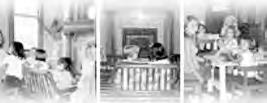

Signal
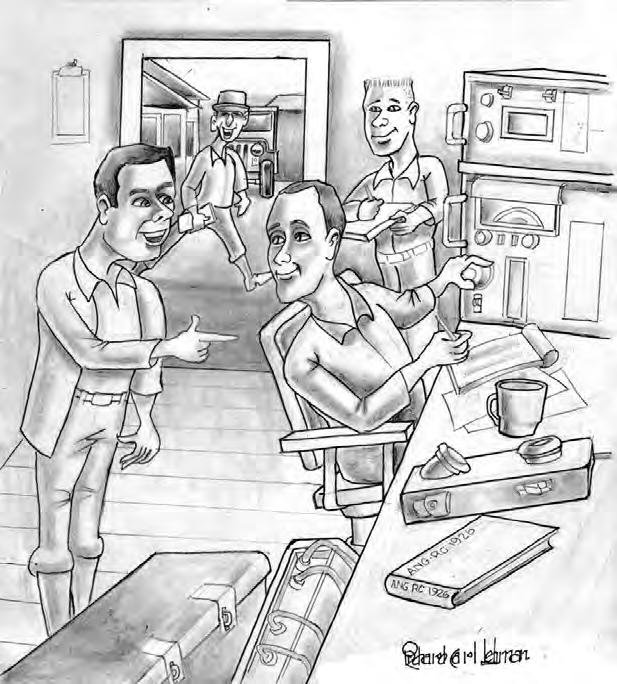
typically, as we are in the field here at Hunter Liggett and reside in tents.”
Upon realizing that I was permanent party and he was a reserve officer, he relaxed and even showed appreciation for my cartoons.
One morning while monitoring priority signals, I overheard a high-ranking officer on a vessel in priority mode. An officer in the communications room exclaimed, “That’s high priority!” and called me to attention. I clarified that it was merely a routine conversation among ships. He apologized for the misunderstanding.
Through my active army career, it was known that there were conflicts in Vietnam and Korea and now there was political unrest in Lebanon. Our unit, the 84th Engineers, was to provide support. There were rumors that we would arrive via aircraft carriers or parachute with the 82nd Airborne. During Basic Training, we learned techniques for landing, rolling, standing up, locating large equipment, and establishing radio communications.
We were ordered to travel by aircraft carrier departing from Monterey, CA. Very early one morning, after sleeping on box spring mattresses in full combat gear, we assembled in formation. The colonel of the 84th addressed us: “Morning, men. I have some unfortunate news—the ship will depart without you.” This announcement was met with loud cheering. We made our presence felt in Monterey that evening.
I was happy to be home from war stuff. I worked in bars in Skid Row; it was exciting to witness the area’s transformation into Pioneer Square. Subsequently, I received a call from a friend offering an opportunity to become an illustrator, to which I enthusiastically agreed.
The following morning, I met with art director Al Hopkins, who reviewed my portfolio that had withstood the test of time in my duffle bag. After examining my work, he shook my hand and suggested we have coffee. I nervously replied, “Why not? I can’t get more anxious than I am now!” His laughter and subsequent hiring reassured me that I had made a positive impression.

My friend Elaine and I ate dinner together at Heyday Farm. It was probably over a month ago now, but I remember the evening clearly. There was something about the whole place that just lulled me.
Restaurants can sometimes have the opposite effect on me—bad acoustics, so-so food, all those other people. But when they know which details to focus on, it’s as if you know with all the sureness you know anything that this is something the owners know how to do.
The single most cheerful server I’ve ever met took our order.
When I invited Elaine, I was overextended, which means more time alone at my desk. I love being alone, but I also know when I’m ready for good company, good conversation, good food and wine. It’s amazing the effect this combination has.

Mary Lou Sanelli Falling Awake
came, something she would remind me of as the vegetables softened, drumming her nails harder on the counter, as if she’d like to rake those nails over someone’s cheek. But we lived in a modern suburb which, of course, meant it was built to be more conventional, and I believe all that conformity started to stifle Mary’s desires, one of which was to be a chef.
In another age, I think Mary would have opened her own restaurant and people from all over the county — not just me with my teenage curiosity — would have flocked to her tables. She would have served Crêpes Suzette and butter bean soup in a bread bowl.
In the 1960s, many jobs contributed to large projects like Atlas, Golden Ram, and Titan during the missile race. The goal was to beat the Russians to the moon, leading to government-funded projects with extensive overtime. Our workdays ran from 7:30 a.m. to 1 a.m. the next day, leaving little room for conversation among colleagues.
I worked as a supervisor and tech writer, often multitasking due to tight deadlines. Materials such as schematics and design drawings were securely destroyed under armed guard. Classified information required strict handling, and any breach of protocol could lead to severe consequences, including court martial. Today, enhanced security measures like checking cell phones should be implemented.
The demanding 110-hour workweek at Milmanco caused me to miss several reserve meetings. I requested the company secretary to send a letter to the Department of the Army explaining my absence. Weeks later, Major Hall from Sandpoint Naval Air contacted me, emphasizing that I had missed four meetings. Subsequently, I received instructions to report to Headquarters and prepare for deployment to Fort Ord for six months.
Within 48 hours, I reported to Major Hall with a letter from Atlas describing my current employment. Standing there in my wrinkled uniform, freshly retrieved from my duffle bag, Major Hall stood up, extended his hand, and thanked me for my dedication and long hours working on national defense. I briefly mentioned the various processes involved, to which he responded, “Have a great day!” I left feeling relieved and somewhat surprised by the positive outcome of our conversation.
That incident occurred 64 years ago. Throughout the decades, I have learned to recover from setbacks and persevere. My most recent fall was on the sidewalk in front of Starbucks. After regaining my composure, a kind gentleman walking towards me reassured me, “No one saw you.”
That is good training.
I don’t even know what to call the feeling I have after a long-overdue evening like this, when I’m driving home with the windows open and the music on, but I know that it’s the best medicine and therapy rolled into one, even without the extra eggplant the chef gave me because I complimented its taste. Watching him sauté made me think of another cook who lived in the neighborhood when I was a kid. Her name was Mary. Mary would make me something to eat when I babysat her two boys, before she’d drive off in her wood paneled station wagon to get her hair “done.” I loved to watch her chop and stir. She had a girlish demeanor, sort of a cross between Major Margaret “Hot Lips” Houlihan on M*A*S*H and Sally Field— Gidget, not the flying nun. I thought she was the most approachable grown-up I’d ever met. In her kitchen, I felt like I was exactly where I belonged. She always told me I could be whatever I wanted. Which meant everything. If Mary could believe my future could be my choice, I could believe it. By the time I was in high school, I started to think more about the fact that there was always a bottle of vodka on the counter when Mary cooked— Smirnoff with a fancy crown on its label, “like the queen I am,” she’d joke. Between stirrings, she’d pour splashes from the bottle over ice, rattle the glass for a sec, and this explained a lot of things that didn’t make sense to me at then. Like the way her words started to sound sloshy, as if they had to find their way through a great deal of muck before they could break free, which is probably the best metaphor I can think of for her life at the time.
I began to see how she probably didn’t want to talk to her babysitter so much as she longed for conversation. She held a master’s degree in political science, but her husband refused to let her work once the first baby
By nature, I have always been inquisitive. I want to know the why of things. For instance, I wanted to know, but was afraid to ask, why Mary’s husband would talk to her the way he did, and why she, the smartest woman I knew, let him, all but cowering in his presence. I guess it was naïve of me to think that she could have stood up to such a bully simply because I wanted her to.
But, oh, I wanted her to.
My mother, no great fan of her husband either, also shrank in my dad’s presence, with maybe a little more verbal push-back than Mary, but never the victor. I grew more and more weary of bullies, but I still had no idea how many of them would grow up to feel entitled to run everything from households to countries . . . not that I want to bring up another bully, absolutely not—one that, I admit, I’ve imagined falling ill or off a cliff or out of an emergency exit door of a Boeing airplane—but he does remind me why Mary may have needed all that vodka. Elaine and I talked about a lot that night, no small talk for us.
There was something whimsical in the air as I walked back to my car. The entire restaurant, which is housed inside of a remodeled farm house off Old Mill Road on Bainbridge Island, was lit up while the yard was buried in nightfall. Even the arbor over the patio is inspired, so that when the moonlight hits it, it glows. Some years ago, I met Elaine. That we’d shared our first meal together that night, just the two of us, felt like part of the magic. I wouldn’t have been surprised to see an owl fly by for good measure.
Which might have been too much magic for one night, but I’d never dream of not wanting it.
Mary Lou Sanelli’s latest title is “In So Many Words.” She works as a writer, speaker, and master dance teacher. For more information visit www. marylousanelli.com.
Your favorite summer reading adventure underway
By Seattle Public Library
The Seattle Public Library (SPL) and Seattle Arts & Lectures (SAL) are joined by new partner King County Library System (KCLS) to launch Summer Book Bingo 2025. Readers in all corners of King County can now participate in the summer reading program that encourages adults to read widely for pleasure and to talk about books with friends, family and neighbors.
Get started by picking up a Book Bingo board at any of 27 SPL locations or 50 KCLS locations. You can also download the board at www. spl.org/BookBingo, www. kcls.org/BookBingo or www. lectures.org/BookBingo.
Submit your board with enough squares filled out for bingo or blackout by Tuesday, Sept. 2, at 6 p.m. to be entered in a prize drawing.
“Since 2015, Book Bingo has grown into a favorite summer tradition for Seattle readers who want to read adventurously and have some reading fun with friends and family,” said SPL’s Chief Librarian Tom Fay. “We are thrilled to welcome everyone in King County to find out why adults deserve a summer reading program, too!”
“Book Bingo is more than just a reading challenge — it’s a celebration of curiosity, connection, and the quirky ways King County loves to read,” said KCLS Executive Director Heidi Daniel. “We’re excited to bring readers from across King County into the mix for the first time, and we’re hoping to make this the biggest year for Book Bingo yet!”
The 2025 Summer Book Bingo card includes 24 categories — ranging from
Can

W“Intergenerational Friendship” to “Grief” to “Monsters” — that challenge readers to explore a wide range of books. Categories are designed to be flexible. Any kind of book counts, including audiobooks, graphic novels, and young adult books.
“We are so excited about Book Bingo’s new and expanded chapter — it’s like a deluxe edition!” said Rebecca Hoogs, Executive Director of Seattle Arts & Lectures.
“In a hurry hurry world, the encouragement to slow down and dive into reading feels like a real gift. We can’t wait to see which books readers spend time with, which books they are pressing into the hands of others, and what new favorite authors or genres they discover along the way!”
SPL and SAL receive many comments each year from participants about their favorite experiences with
the program, from “finding a book that was so funny I couldn’t read it in public because I was laughing so hard!” to “challenging me to read genres that I do not normally gravitate towards.”
One Summer Book Bingo fan shared that “Reading all of these books was exhilarating. I immersed myself in diverse worlds, each with unique perspectives, which expanded my horizons and deepened my appreciation for storytelling.”
This year’s Book Bingo cards were designed by Seattle-based artist Marlowe Pody, also known as Odd Rabbits.
How to find books for Summer Book Bingo
If you need reading ideas for any bingo square, you can find a wide range of suggestions for each category in book lists created by SPL and KCLS librarians, posted at www.spl.org/BookBingo and
childbirth be painless?
hether you have had a baby, are pregnant now, or are planning to get pregnant...it’s worth knowing about the fetal ejection reflex, also called the Ferguson reflex - for it can surprisingly offer a painless birth - naturally.
Here’s what a doctor (Ferguson) discovered in the 1940s: a woman’s body is designed with a natural capacity to birth a baby without conscious effort and pushing! This can sound bizarre and even unreal in the world today, where coached pushing during childbirth is the norm.
WHAT IS THE FETAL EJECTION REFLEX?
When an expectant mother experiences the necessary conditions for this to happen, her body will generate a burst of oxytocin, moving the fetus through the birth canal and expelling the baby in one spontaneous reflex. When the mother feels supported and cared for and is not interrupted, she can enter into an altered state that allows her body to do what it is designed to do - deliver her baby without pushing. The fetal ejection reflex is a spontaneous reflex that doesn’t require thought or effort.
www.kcls.org/BookBingo.
You can also stop by any KCLS or SPL location to find Book Bingo displays and ask for suggestions. SPL patrons can ask for personalized suggestions at www.spl.org/YourNext5 and KCLS patrons can ask for suggestions at www.kcls. org/BookMatch. For the “SAL Speaker” square and many others, consider reading titles by upcoming or past Seattle Arts & Lectures authors.
Keep the conversation going by posting on social media using the hashtag #BookBingoNW2025. How to submit your card to be entered in the prize drawing
Submit the front and back of your completed card (with either a bingo or a blackout) by dropping off your card (or a copy) at any location of The Seattle Public Library or the King County Library System, or by completing the submission form at www.spl.org/ BookBingo or www.kcls.org/ BookBingo. Entries must be received by Tuesday, Sept. 2 at 6 p.m.
If you turn in a Summer Book Bingo card with enough squares for bingo (completed in a horizontal,
Long time Madison Park resident, Emily Elder Scott, age 94, died peacefully in her home in the early hours of May 1, 2025. She was born on July 19, 1930, in Missouri to Marie Louise Stanley and Emmet Hall Elder.
vertical, or diagonal line), you’ll be entered into a drawing for a commemorative tote bag. If you complete all 24 squares for blackout, you’ll be entered in a drawing for one of three grand prizes per library system, including a “Create Your Own Series” subscription to SAL’s 2025/26 Season.
Teen Book Bingo and Kids Book Bingo
Teens can also get in on the summer reading fun. SPL and Seattle Arts & Lectures are offering a Teen Book Bingo card that you can download or pick up at any SPL location to start reading and playing. With 25 squares, the teen board includes categories such as “DNF = Did Not Finish,” “Face Your Fears,” and “Published in Your Birth Year.”
To be entered in prize drawings, teens should drop off their card (or a copy) at any location of The Seattle Public Library, or complete the submission form at www.spl.org/BookBingo.
Prizes include a $25 Visa gift card for bingo and a grand prize of a $100 gift card to Elliott Bay Book Company for blackout.
For younger readers ages 0-12, Seattle Arts &
Lectures is offering Kids Book Bingo, which you can download at www.lectures. org/BookBingo, with categories such as “A Biography of Someone You Admire” and “Read in Pajamas.” To be entered into prize drawings, mail your card to Seattle Arts & Lectures at 340 15th Ave E, #301, Seattle, WA 98112, or email a photo of the front and back of your board to bookbingo@ lectures.org. Prizes include drawings of $30 and $100 gift cards to independent bookstores. The deadline for Teen Book Bingo and Kids Book Bingo is also Sept. 2, 2025.
About The Seattle Public Library
The Seattle Public Library believes that the power of knowledge improves people’s lives. With 27 locations and a Mobile Services unit, a digital and physical collection of 2.9 million items, and thousands of programs a year, we bring people, information and ideas together to enrich lives and empower community. Contact the Library’s Ask Us service by phone at 206-386-4636 or by email or chat at spl.org/ Ask. Find out more about our future plans at www.spl. org/StrategicPlan.
Jenny Martin
Just like we don’t have to think about making our heart beat or taking a breath, your body does not need coaching to release your baby. Pushing your baby out can be involuntary and without conscious direction.
While women can have this experience in a medical setting - it is often not conducive to allowing birth to be a natural, reflexive event. Coached pushing and epidurals will usually block this natural capacity of the female body and limit a woman’s ability to experience the Ferguson reflex.
WHAT FACILITATES THE FETAL EJECTION REFLEX?
The fetal ejection reflex will only happen with sufficient oxytocin in your system. Oxytocin is both a neurotransmitter and a hormone. It is responsible for the contractions during childbirth and the positive feelings of love, trust, and safety.
When you feel supported, cared for, and
In 1951, she married her first husband, Alan Scott of Seattle, in Washington D.C. The couple soon moved to Seattle to be near his parents in Madison Park, Elva and Gordon N. Scott. Together they had four children, one of whom died in infancy. Her three surviving children and their families continue her legacy.
While raising her family, Emily built a successful career as a realtor, establishing life-long relationships with those she served. She began at Washington House in Madison Park, later worked for John L. Scott Real Estate, and in 1977 married her second husband, W. Lennox Scott, who predeceased her and whom she loved deeply until her passing. She concluded her distinguished career as one of the founding principals at Madison House in Madison Park.
Over the years, Emily was actively engaged in numerous pursuits, including golfing with friends, traveling, and
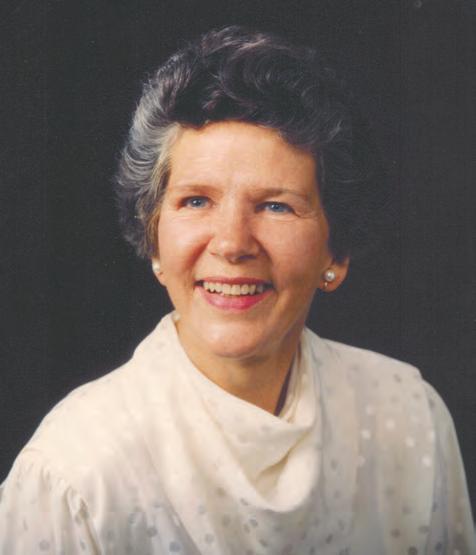
participating in the Sunset Club. She dedicated her time to volunteering with Northwest Harvest and Overlake Hospital and was a member of the Daughters of the American Revolution.
Emily filled her days with friends, family gatherings, quiet contemplation, and voracious reading about contemporary world events, history, and the occasional mystery—a passion supported by the availability of reading material provided by the Seattle Public Library. Emily was cherished for her independent spirit,
unwavering loyalty, and impeccable sense of style. While unfailingly loyal to those she loved, she modeled the importance of self-respect. She will be deeply missed by family and friends.
The family extends heartfelt gratitude to Evergreen Hospice for their compassionate care and support.
A private end-of-life gathering is planned. In lieu of flowers, donations may be made to Seattle Public Library or Northwest Harvest in her memory.
Emily Elder Scott





the Rhododendron.
Mother’s Day in May is considered the peak of the season for these flamboyant bloomers… and it is. Especially so, for the named hybrids that most nurseries offer and most of us grow. Yet, the sagacious gardener knows that what they are seeing in the month of May is no more than a show stopping number in the middle of the performance. Any number of
Rhododendrons have been blooming since early Spring and others will be going well into June. If you want to stretch the Rhododendron season over a four month period, start looking for plants to make that happen. There are plenty. Rhododendron strigillosum, opens its large deep red
NEIGHBORHOOD MARKETPLACE




flowers sometimes as early as mid February. Look around, visit public gardens, talk to nursery people. Specialty nurseries often begin marketing flowering Rhodys in March. Make a trip to the Rhododendron Species Botanical Garden (2525 S. 336th St, in Federal Way). This is the World’s largest collection of Rhododendron species (the plants as they appear in nature, before hybridizers have cross pollinated them). Catalogs and websites often list Rhododendrons as Early, Mid or Late Season.
June flowering Rhododendrons are as surprisingly abundant as the early bloomers and there are flower hues that will fit into any carefully orchestrated garden color scheme. Rhododendron ‘Evening Embers’ is vibrant red, R. ‘Scintillation’ is deep pink, R. Daphnoides’ is purple, R. ‘Goldflimmer’ is rosy pink.
In a class by itself is Washington’s state flower, the native Rhododendron macrophyllum. It will be filling our forests with its pink to pale lavender blossoms this month, most vividly along Hood Canal and on the Olympic
Peninsula. Selected to represent the state in the floral exhibit at the 1893 Chicago World’s Fair, this beloved native was designated the state flower by our legislature in 1959.
Our native Rhododendrons are statuesque plants, a bit more loose and open than the hybrids we are accustomed to, but in a shady location, at the edge of the garden, they will stretch up and out, gracefully, to a height of 15 feet. Rhododendron macrophyllum is an exquisite plant all year around. It is especially effective paired with ferns and other woodland ground covers. Most Rhododendrons flourish in light shade. They love our rich, loamy acid soil. You can put them in the ground any time, but it is important to keep them well watered albeit with ample drainage. In truth they are an easy plant to grow here. So while you may have enjoyed the big production number at the end of Act Two last month, the show ain’t over! Start thinking about a riveting Act Three for your garden with a zinger of a finale.

PHOTOS COURTESY OF MARY HENRY
Steve Lorton Tree Talk
MARKET
From page 1
to 3 p.m. Buy Tickets on the website www.friendsofmadisonpark.com or the day of at check-in booth located at the corner of 41st Ave E and E Madison (the Bank of America parking lot). Artisan Market also is happening at the B of A lot that day.
SUMMER MEETINGS FOR THE NEIGHBORHOOD
Tuesday, June 3 at 7 p.m. at the Bathhouse: Regular Neighborhood Meeting with updates on events, One Seattle Plan, and Farmer’s Market
July, date TBD: Our 2nd Bathhouse and Beach Renovation Interactive Meeting will happen in July (instead of the June 3 date originally planned). We will have updates from the Architectural Team with More Ideas and Possible Concepts to Consider. Boards from Original Meeting are on our websitewww.friendsofmadisonpark. com.
Tuesday, Aug. 5 at 7 p.m. at the Bathhouse: Please attend a meeting with City Council Rep. Joy Hollingsworth re the One Seattle Plan and Madison Park as a Neighborhood Center, public safety and other issues you may like to raise with our City Council representative.
Children’s Parade and Picnic, July 12 from 11:45 a.m. to 2 p.m.
Mark Your Calendar for this Annual Beloved Event. Meet at Starbuck’s at 11:45 to decorate your bikes, yourselves for the parade! Led by our local fire engine and firemen, join us for the parade to the park where there will be games galore- sack races, tug of war contests, water ballon toss, parachute games, watermelon eating contest and music from the Music Factory. And if that isn’t enough,
MARTIN
From page 5
undisturbed during birth, you facilitate your body’s release of oxytocin. Being able to move your body and receive loving touch if and when you choose to contributes to evoking a feeling of well-being.
The idea here is that this spontaneous process can happen when you naturally enter an altered state of awareness and release the need to control the process. This means not having interruptions and interventions and being in a peaceful, quiet, dark environment.
To engage this natural reflex in the body, you must have dropped out of your ‘task-oriented mind’ and into a state of pure being. Naturally allowing your throat to open and making a deep guttural sound will often facilitate this reflex - as long as you follow what your body wants (making sound) rather than trying to force it

there will be face painting, drafts, a ballon artist, hot dogs, sno-cones, popcorn, Bamboo Thai delish, and cotton candy. Think sunshine and fun!
Thanks to all our sponsorsRed Wagon Toys, Woodside and Eckart Dentistry, Neil Kelly, Seattle Junior League, Bamboo Thai, McGilvra’s, Dass Dance Studio, the Music Factory, Girls Rock Math and Bert’s Red Apple.
MUSIC IN THE PARK
2025 SEASON IS SET
Music in the Park is set for 2025 with all new bands!!!
Every Thursday in August from 6:30-8 p.m. Bring your blanket and picnic and enjoy FREE the line-up:
Aug. 7: Eden featuring Savanna Wood (yes, she was on the VOICE)
Aug. 14: Angela Soffe
Aug. 21: The Carlile Family (yes, that’s Brandi’s family)

happening. All of this considered, your body is designed to release a surge of oxytocin, which causes intense involuntary pushing that quickly and efficiently helps your baby to be born.
In the moment, mothers won’t realize what happened - due to not being in an analytical state of mind when the reflex occurs. The fetal ejection reflex will not happen if you are in analyzing mode. But post-childbirth, women
describe this experience as follows: “I didn’t even have to push! The baby flew out”that is the fetal ejection reflex. When you stop to think about it, the divine design of the female body is quite amazing. Instead of her body requiring prolonged, torturous labor, the original design was for an expedient, even pleasurable experience.
A woman’s body is also created to release DMT, a naturally occurring psychedelic
WILDFIRE
From page 1
Emergency Management Agency, suggesting that states should handle disaster response and recovery with the federal government potentially offering reimbursement.
FEMA’s potential elimination has concerned King County leaders, including Chief Operating Officer Dwight Dively, who previously noted that about 40% of the King County Emergency Management Department’s staff is funded by federal grants.
In the case of a natural disaster occurring in King County, FEMA typically picks up 75% of the allowed costs, while the state picks up about 12.5%.
More than 352,000 King County residents live in areas with high vulnerability to wildfires, according to McCluskey. In 2022, the Bolt Creek fire, along with two other significant wildfires ignited, in September and burned into the following month. Those fires produced smoke that reduced the air quality in the King County region to the worst in the world for multiple days.
According to a health impact assessment by University of Washington researchers, a similar smoke episode in 2020 contributed to an estimated 92 excess deaths in the region.
King County Executive Shannon Braddock also included contingency plans for any disruptions to FEMA as part of her 200-day plan. Braddock’s office will work to establish an emergency preparedness fund and also consider the backfill of select regional disaster funding to ensure mitigation planning, wildfire and extreme heat readiness across the county.
BUDGET
From page 3
numerous items that were vetoed,” Ferguson said during a Tuesday media availability event, but he did not provide any specifics at the time other than referencing vetoing a section in one of the spending plans that would have removed a tax exemption for community banks.
Aug. 28: Neon Rain
Several evenings the Music Factory band students will provide a short set starting at 6, before the main concert.
Thanks to our all our sponsors- Parkshore Residential Association, Cactus Restaurant, Windermere Madison Park, Aegis Living, Coldwell Banker Bain, The Music Factory, and Wicklund Real Estate.
during birth. However, this also requires a relaxed, supportive environment for the mom. If she feels tense and observed and the environment is loud with bright lights, she won’t reach the state of being necessary for all these natural mechanisms to activate.
While childbirth involving medical interventions is the preferred choice for many expectant mothers these days, it can also be empowering to know that your body is exquisitely designed for efficiency and pleasure during childbirth and remarkably without pain!
Jenny Martin is a psychologist and regular contributor to the Madison Park Times. She created the Psychedelic Cervix Childbirth Course to support expectant moms to have a pleasurable birth experience. She can be reached at support@drjennymartin.com, and will be happy to answer any questions you may have about ecstatic childbirth.
In his section veto of Senate Bill 5794, Ferguson wrote, “Repealing this B&O tax deduction would significantly increase lending costs for community banks at a time when we are trying to keep housing expenses as low as possible.”
The governor was asked about his message to hard-working Washington families worried about increasing taxes.
“We hear those concerns, and that’s why we took the time to go through the budget line by line,” Ferguson explained. “Inheriting a $16 billion budget shortfall is … not the way I wanted to start as governor. I understand very clearly that this will be a challenging budget for Washingtonians.”
As reported by The Center Square, nonpartisan staff to the Senate Ways & Means Committee say the actual budget shortfall is $7.5 billion, not $16 billion.
In the meantime, Democrats are celebrating that the operating budget has been signed into law.
“Even in the face of financial challenges, we’ve safeguarded essential services like healthcare, mental health services, public safety, and social programs that our communities rely on daily,” Washington State Democrats emailed The Center Square.
Tax hike opponents outside of government, including the Association of Washington Business, contend that the budget as passed is devastating.
“There is no section of our membership that is not going to be negatively impacted by this budget,” AWB Vice President for Government Affairs Morgan Irwin said. “Whether that is a direct tax on their business or tax upstream or downstream on the goods and services that they produce or provide, everyone, and I mean everyone, is going to be affected by this budget.”
Irwin said AWB was initially optimistic early in the session that Ferguson would exercise more restraint regarding tax increases.
“You can’t make something more affordable by making it more expensive,” he said. “Our view is that the Legislature made almost every aspect of the Washington economy this year more expensive to operate, more expensive to buy in, more expensive to sell in, and more expensive for consumers across the board. Any socioeconomic level, and any industry that people buy from, their goods and services will cost more because of this budget, and we don’t think that that was the right move.”
ADOBE STOCK





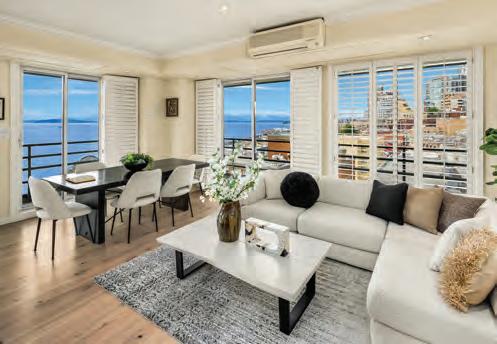







Stay ahead of the curve: Your Q1-2025
For buyers, sellers, and investors interested in making a move, the question of “What’s going on with the real estate market?” is top of mind. However, the answer isn’t always as straightforward as one might expect, especially when analyzing a dynamic market like Seattle’s, with its wide property price point range, mix of condominium residences and singlefamily homes, and everything from sprawling waterfront estates to fixerupper houses waiting for a modern makeover.
In Seattle, conditions vary between price points. In the most popular Seattle neighborhoods, inventory within the $1 million to $2.5 million range remains at low levels, creating more competition for buyers searching for a home within this budget. However, this doesn’t mean that sellers should simply list their home and expect immediate competing offers. Homes that aren’t “move-in-ready” sit on the market longer than turnkey properties. Taking the extra time to strategically list a home, meaning making
value-boosting repairs, renovations, and upgrades, beautifully staging it, and appropriately pricing it, will pay off in the long run. When sellers work with an experienced broker who understands the market well and has a clear plan in place for how to best navigate it, sellers can go into negotiations with confidence that their listing has value. Anticipating what a buyer might flag during tours or inspections can create a much more seamless process for all involved.
Typically, the longer a home sits on the market, the harder it becomes to sell. However, due to the slower market conditions witnessed throughout the past few years, sellers shouldn’t fret when their home doesn’t immediately sell. In fact, the data backs this up. Realogics Sotheby’s International Realty (RSIR) recently released the Market Trends From Around the Sound report,


diving into year-over-year comparisons between Q1 data points for 13 of the Puget Sound region’s distinct communities. (https://www.rsir. com/blog/market-trends-fromaround-the-sound-q1-2025/)




As the report reveals, in the Q12025 Seattle single-family market, listings spent an average of 34 days on the market. However, demand still outpaced supply, and the market had 2.2 months of inventory, which made it a seller’s market.
A balanced or neutral market has three to six months of supply. Seattle’s condominium market moved at a much slower pace, with residences spending an average of 60 days on


Linda Chou & Summer Carlton Real Estate
















New wildlife-friendly habits for your spring garden
As the ground warms, and organisms from microbes to mammals rev up for spring, there’s a lot of confusion about how to be gentle to the Earth while gardening.
On social media, memes are flying asking us not to clean up spent winter foliage or to skip mowing the lawn in May entirely (a movement dubbed “No-Mow May”).
Yet risking even a brief glance at the comments section reveals widespread confusion and division.
Perhaps you’ve been repeating this annual clean-up ritual in fall and/or spring, and it sounds like inviting inevitable chaos to stop it. Perhaps you’re on board with the concept but are confused about how and when to prune, if at all. Let’s start with why you might want to stay or alter your spring clean-up in the garden.
WHY SKIP CLEAN-UP?
First, the exception: removing the three D’s — dead, damaged or diseased — biomass is always recommended. It’s healthier for the plant and its companions.

While leaf litter, spent stalks and seedheads look like a mess to an eye used to manicured perfection, they provide critical shelter and nourishment to overwintering beneficial insects and pollinators, including bees, butterflies, and birds. In the face of habitat loss due to urbanization, these creatures are declining in massive numbers – yet even a window box or a small patch of earth has the power to save a hungry bee or migrating bird during the lean times of winter.
A blanket of fall leaves on the ground keeps the ground and all its nesting creatures warm. Removing or shredding the leaves interrupts or ends that cycle. A recent study (https://www.sciencedirect.com/science/article/ pii/S0048969725004565) showed that leaf removal decreased the spring emergence of butterflies by 45%, and reduced the diversity of butterfly populations by

40%. The more diverse creatures our gardens support, the healthier our ecosystem will be.
Many beneficial insects overwinter in the cozy shelter of hollow stems, and butterfly and moth chrysalides attach themselves to stems and fallen leaves.
WHEN, IF, AND OPTIONS ON HOW TO “CLEAN UP”
One guideline, according to the Xerces Society (https://xerces.org/blog/
dont-spring-into-gardencleanup-too-soon), is to wait until temperatures are reliably over 50 degrees Fahrenheit – including at night – to allow overwintering insects to emerge from their winter resting spots. Species all have personal preferences, so there’s no hard and fast date for everyone; that’s why you’ll see some brave bees on your hellebores on a sunny January day. If this number sounds familiar, that’s also the minimum
temperature tomato plants will begin growing. So, have you planted your tomatoes in the open air yet? If no, step back inside with the pruners.
While temperatures vary widely across regions, another cue is bloom times.
Waiting until the apple and pear trees are finished blooming should be a safe time for most overwintering beneficial creatures.
If you can be patient, skip pruning altogether.
Designer and Midwestbased wildlife advocate
Benjamin Vogt, author of “Prairie Up,” and “A New Garden Ethic,” tries his best not to prune. He questions the need to clean up at all –why not design for wildlife and make it look beautiful? If he does prune, he leaves stems 18” high, knowing that spring growth will soon cover those bare stems. If for some reason, you need to clean up early, try this extra life-saving compromise: chop and drop. Cut or pull out the stem but lay it on the ground. If you can leave it there, it will compost and nourish the soil. If you must remove it, do so after several warm days to allow the insects time to move out.
THE ELEPHANT IN THE GARDEN: LAWNS AND “NO-MOW MAY”
“No-mow May” was conceived as a kind of training wheels intro to wildlife gardening. The idea is let your lawn go “wild” in May and allow insects to emerge and any flowering plants in the lawn to bloom. In addition to supporting pollinators, it



What My Clients Are Saying...
“We have known Laura for 5 years, initially meeting when our best friends were buying a home in Broadmoor. We marveled at her professionalism, knowledge, and congeniality, even though she was representing the seller; and felt comfortable reaching out directly to her when conducting our personal search months later. With her guidance, we made Broadmoor home, and have been grateful for her since. ” - Antoine & Heidi






Pausing on pruning can benefit countless beneficial species in the garden.
COURTESY ERICA BROWNE GRIVAS




































MARKET
From page 1
the market in Q1-2025. However, other condominium markets in the region saw more activity, like the Eastside market (which includes Kirkland, Bellevue, and Redmond), with its average of 37 days on the market.
If we look at RSIR’s Q1-2025 reporting on the average sales price per foot, we see that in Seattle and the Eastside (both condominium and single-family markets), the figure has increased year-overyear for the past three years’ first quarters. This could be due to the rise of smaller homes on smaller lots. The median sales price has also consistently increased over the past three years in these markets, indicating that a home purchased in these areas will likely
see appreciation, if the trends are to be trusted.
Elevated mortgage rates continue to create obstacles for both buyers and sellers. However, as people adjust to the “new normal” and decide to pursue their real estate goals anyway, we see more and more buyers working with the higher rates rather than attempting to wait them out. After all, it’s unclear when they will come down and how significant a decrease it will be. There is never a perfect time to make your move, as the market is constantly shifting.
The best place to start with your buying or selling journey is by identifying your goals — and don’t be afraid to dream big! Reach out to us to discuss what you want and how we can help make it happen. Connect with us at 206-852-0714 or choulinda@gmail.com.




Report: Job loss tops list of causes for homelessness in King County
By Spencer Pauley The Center Square
A comprehensive report on King County’s homeless population reveals job loss is the leading driver of homelessness in the region.
The report is based on data from King County’s 2024 Point in Time (PIT) count, which revealed that the majority of homeless people in the region (45%) cited job loss as the cause of their current homelessness, followed by eviction from their last stable home (9%).
Only 5% of unhoused people cited mental health issues for why they became unhoused and 47% reported that they abuse substances.
Last year’s PIT count had the highest recorded number of homeless people in King County with 16,385. The 2024 tally represents a 22.6% increase in the
GRIVAS
From page 3
requires less work.




total number of homeless people in King County between 2022 and 2024.
KCRHA Communications Director Lisa Edge told The Center Square that the agency’s findings are supported by other research that shows economic conditions drive homelessness rates.
Not only are people losing housing due to job loss and evictions – most of them were stably housed in King County beforehand. According to a supplemental survey in the report, 490 out of 821 respondents (59.7%) reported that they were last stably housed in King County.
Seattle-based public policy think tank Discovery Institute painted a different picture with its data. According to the institute’s 2024 survey of people living in both temporary shelters and transitional housing in Seattle, 49.7% of people first began experiencing
However, there are reasons to rethink this plan. According to Scotts Miracle-Gro experts, going a month without mowing weakens your lawn, encouraging weeds and pests, which encourages gardeners to nonwildlife friendly interventions.
Matthew Koch, Ph.D., Director of Biotechnology and Genetics at The Scotts Miracle-Gro Company, says, “For most lawns, going an entire month without mowing can actually do more harm than good. Overgrown grass blocks sunlight, limiting the plant's ability to make energy and weakening the turf….Plus, the steps needed to address these problems would likely counteract the benefits that an overrun lawn would provide to pollinators.”
Instead, Koch recommends incorporating biodiversity year-round by adding pollinator-friendly groundcovers, planting clover lawns, or designating specific areas for naturalization.
A broader view is worth considering. While temporary measures like “No-Mow
homelessness outside of Seattle or King County and 86.6% were born outside of the region.
The Center Square reached out to Caitlyn McKenney, research fellow and program coordinator for Discovery Institute’s Center on Wealth and Poverty, who coauthored the report for comment on the PIT comprehensive report, but did not receive a response before publication.
The comprehensive report’s data supports KCRHA’s housingfirst approach to end homelessness, which prioritizes building more units of affordable housing.
KCRHA has previously stated that a plan to increase housing capacity in King County to needed levels could potentially cost $450 million to $1.1 billion per year.
According to the latest PIT report, for every shelter bed in King County, more than two people are waiting.
May” raise important awareness, replacing all or part of a traditional lawn with more ecologically valuable plantings has greater, lasting benefits.
Lawns, especially when conventionally maintained with high water use and chemical inputs, offer negligible environmental benefits and can cause significant harm to waterways and ecosystems.
Where a lawn-like appearance is needed, consider resilient alternatives like mini clover or native meadows (which can go months without mowing). Adding bulbs such as snowdrops or crocus into an existing lawn can also provide critical early food for pollinators while maintaining a familiar green space.
LOOKING AHEAD
There’s a paradigm shift underway in how we view wildness and a little 'chaos' in the garden — and it couldn’t come at a more critical time. By welcoming a wilder, richer garden, we’re offering a lifeline to the insects, birds, and other creatures whose survival is intimately tied to our own. And in return, we’re rewarded with a beautiful garden that’s healthier, more resilient, and full of life.
Seattle’s high buy-rent gap stirs policy debate
By Spencer Pauley
The Center Square
Housing market experts say rent control is a factor in Seattle having one of the biggest cost gaps between renting and buying.
According to a recent study from Bankrate, the Seattle metro area has a buy-rent gap of 119.5%, behind only San Jose (185.6%) and San Francisco (190.7%), two other tech hubs.
Sean Flynn, executive director at the Rental Housing Association of Washington, says the tech sector brought more high-wage jobs into Seattle, which drives up the price of homes and mortgages. At the same time, rent has been relatively flat for several years with more and more apartments coming online. This caused the 119.5% buyrent gap.
Despite the gap, Flynn does not expect a housing crash in Seattle any time soon. Instead, he expects rent to rise rather than home prices and interest rates to fall.
Flynn argues recent policies, including Engrossed House Bill 1217, may undercut affordability goals and disincentivize investments in new rentals. This bill – signed by Gov. Bob Ferguson earlier

this month – caps annual rent increases at 7% plus inflation for most tenants, prohibits rent increases during the first 12 months of a new tenancy, and requires 90 days’ notice for any rent increases.
Supporters of the rent cap legislation say it will provide



renters with stability and predictability, allowing them to budget better and plan for the future.
Seattle can’t pass its own rent caps, but it’s gone big on tenant protections, like requiring landlords to provide 180 days' written notice for
any rent hikes. Flynn likened rent caps to unfunded mandates in healthcare, arguing that enacted policies shift the housing market, causing cost burdens on housing providers.
“If people are having a difficult time medically, we


have Medicaid, which pays the doctor. We don’t go to the doctor and say, ‘Oh no, you have to give this person a heart scan for free because we told you to,’” Flynn said. “Somehow housing is different.”
The Rental Housing
Association of Washington suggests direct subsidies to help those struggling to pay rent rather than handicap the market and for local cities and counties to streamline the building process so that more housing can be constructed to fit demand.




Listed by Sarah Rudinoff with WRE Mount Baker
ADOBE STOCK













